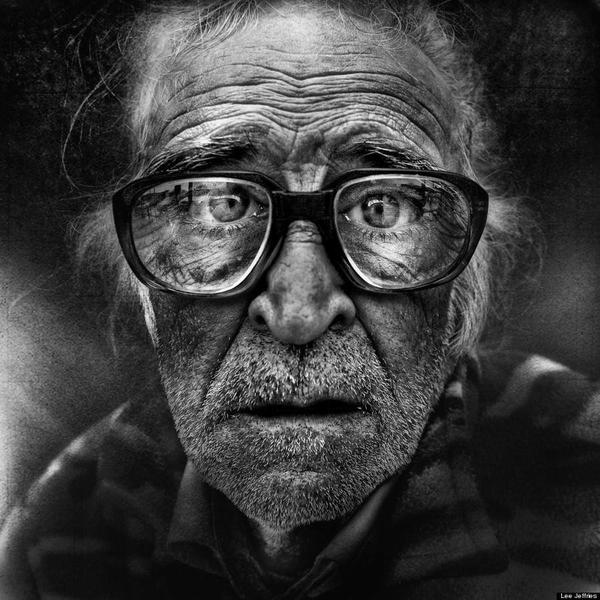Photo by LEE JEFFRIES
LIGHT BOX: In 2008, accountant and amateur photographer Lee Jeffries was in London to run a marathon. On the day before the race, Jeffries thought he would wander the city to take pictures. Near Leicester Square, he trained his 5D camera with a long, 70-200 lens on a young, homeless woman who was huddled in a sleeping bag among Chinese food containers. “She spotted me and started shouting, drawing the attention of passersby,” Jeffries says. “I could have just walked away in an embarrassed state, or I could have gone over and apologized to her.” He chose the latter, crossed the street and sat with the woman. The eighteen-year-old, whose complexion indicated she was addicted to drugs, told Jeffries her story: her parents had died, leaving her without a kit home, and she now lived on the streets of London.
This experience had a profound effect on Jeffries, sharpening the focus on the subject matter of his street photography—the homeless—and defining his approach to taking pictures. He didn’t want to exploit these people or steal photographs of them like so many other photographers who had seen the homeless as an easy target. In an effort to make intimate portraits, Jeffries would try to connect with each person on an individual basis first. “I need to see some kind of emotion in my subjects,” Jeffries says. “I specifically look at people’s eyes—when I see it, I recognize it and feel it—and I repeat the process over and over again.” Jeffries tries to keep the contact as informal as possible. He rarely takes notes, feeling it immediately raises suspicion, and prefers to take pictures while he is talking with his subjects to capture the “real emotion” in them. “I’m stepping into their world,” he says. “Everyone else walks by like the homeless are invisible. I’m stepping through the fear, in the hope that people will realize these people are just like me and you.”
Self-taught and self-funded, Jeffries has used vacation time to travel to Skid Row in Los Angeles three times, as well as Las Vegas, New York, London, Paris and Rome, to continue his project. The way that Jeffries processes his images and the heavy use of shadow and light within his pictures is a direct reference to the religious overtones he felt while photographing the beggars and homeless in Rome. The underexposure in camera and process to dodge back light where he wants it—although done in a digital environment—relate more to the traditions of analog printing. The effect of the subjects on the photographer is equally heavy: “When I’m talking to these people, I can’t then leave that emotion, so when I get back to my computer so emotionally involved, sometimes I will start to cry when processing the image,” Jeffries says. MORE

